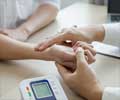
‘Telehealth is an effective option for educating, diagnosing, monitoring and following people with health issues including cardiovascular disease.’
Tweet it Now
“Telehealth is transforming the way health care is delivered by improving convenience and availability,” said the statement’s lead author Edwin A. Takahashi, M.D., an assistant professor of radiology in the division of interventional radiology at the Mayo Clinic College of Medicine in Rochester, Minnesota. “However, we learned during the pandemic when we were forced to limit in-person care that there are limitations to using telehealth.” This new scientific statement, “An Overview of Telehealth in the Management of Cardiovascular Disease,” highlights the impact of telehealth in heart disease, stroke, and peripheral artery disease (PAD) management, reviews strategies and obstacles for telehealth adoption in cardiovascular disease (CVD) care and identifies knowledge gaps.
The Benefits of Telehealth for Cardiovascular Diseases
The writing group’s review found that telehealth may:- reduce health care costs;
- improve access to care in rural and underserved areas; and
- increase care quality and patient satisfaction.
Telehealth portals and smart devices may be cost-effective options for remotely managing conditions that are cardiac risk factors, such as high blood pressure and diseases like heart failure and coronary artery disease. “Telestroke,” the most studied area of telehealth in CVD, which is highly specialized stroke care delivered by first responders receiving instructions and guidance from remote stroke experts, often leads to improved rehabilitation and recovery for people who have had a stroke or may otherwise lack access to specialized stroke care.
Challenges of using Telehealth
Challenges that may prevent more widespread telehealth use in CVD include barriers for both health care professionals and their patients.For health care professionals, the challenges identified are:
- acceptance and uptake of telehealth technology, which may vary because of health care professionals’ age, technology expertise and perceptions;
- inconsistent reimbursement and licensing matters (license requirements vary by state);
- logistical challenges in scheduling and maintaining workflow; and
- lack of infrastructure to analyze data from remotely monitored devices.
For people with CVD, the challenges identified are:
- limited resources to access technology and devices for older adults and under-resourced populations;
- health literacy barriers, including cultural and language barriers that may prevent people from using digital platforms, consumer wearables and other devices to their full capacity; and
- insufficient access to internet bandwidth for a high-quality video appointment.
Advertisement
As the country shifts back to in-person care, the statement encourages research into the role of telehealth beyond the pandemic. “Telehealth has the potential to have a larger role in urgent diagnosis and remote monitoring,” Takahashi said.
Advertisement
“Telehealth will play an important role in the future of cardiovascular care because the evolution of technology will enable new remote care opportunities to improve medical accessibility,” Takahashi said. “Hopefully, this will have a strong benefit for patients from historically excluded and rural communities who often face health care disparities and are most at risk for cardiovascular diseases.”
Source-Eurekalert









